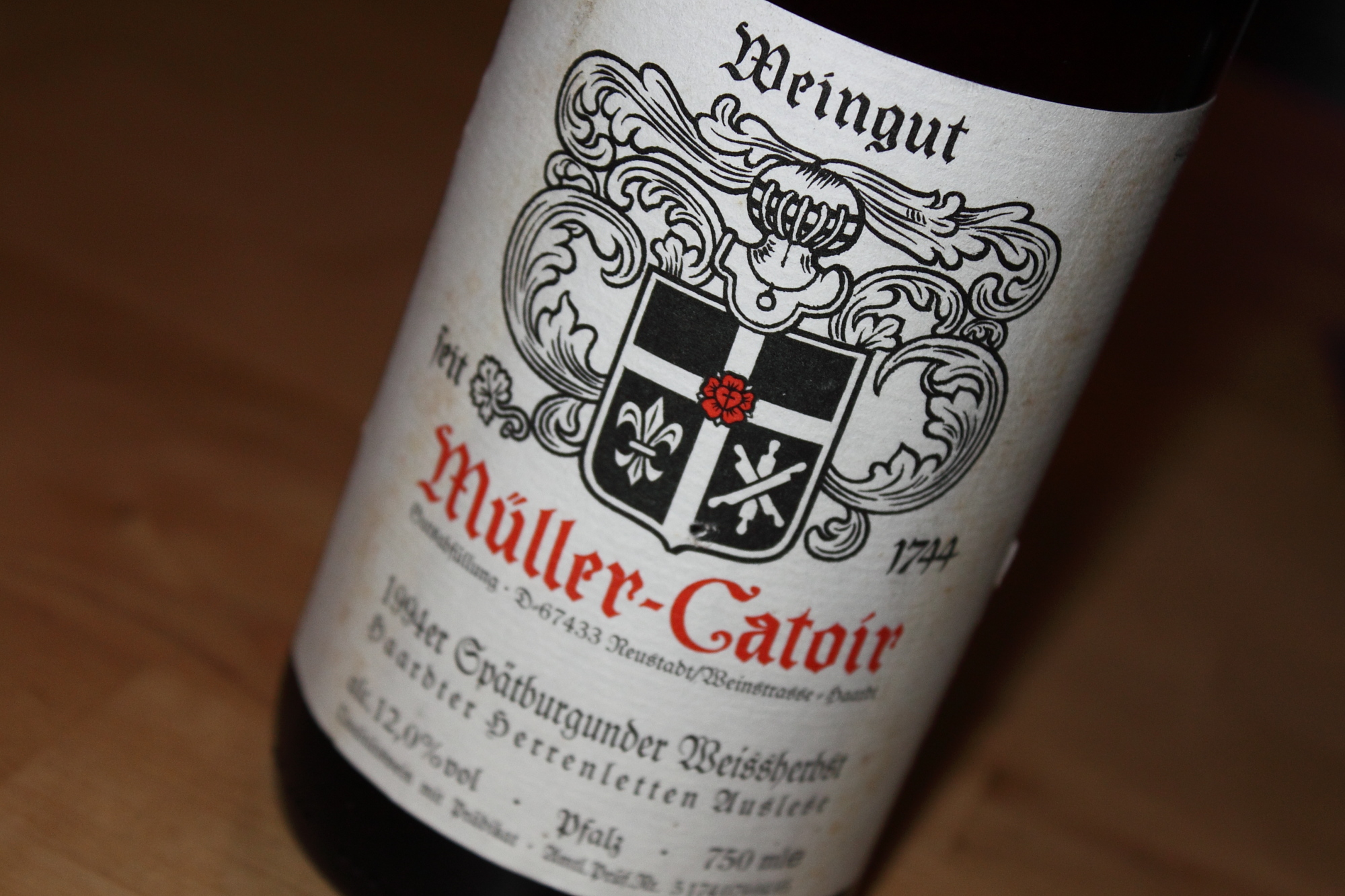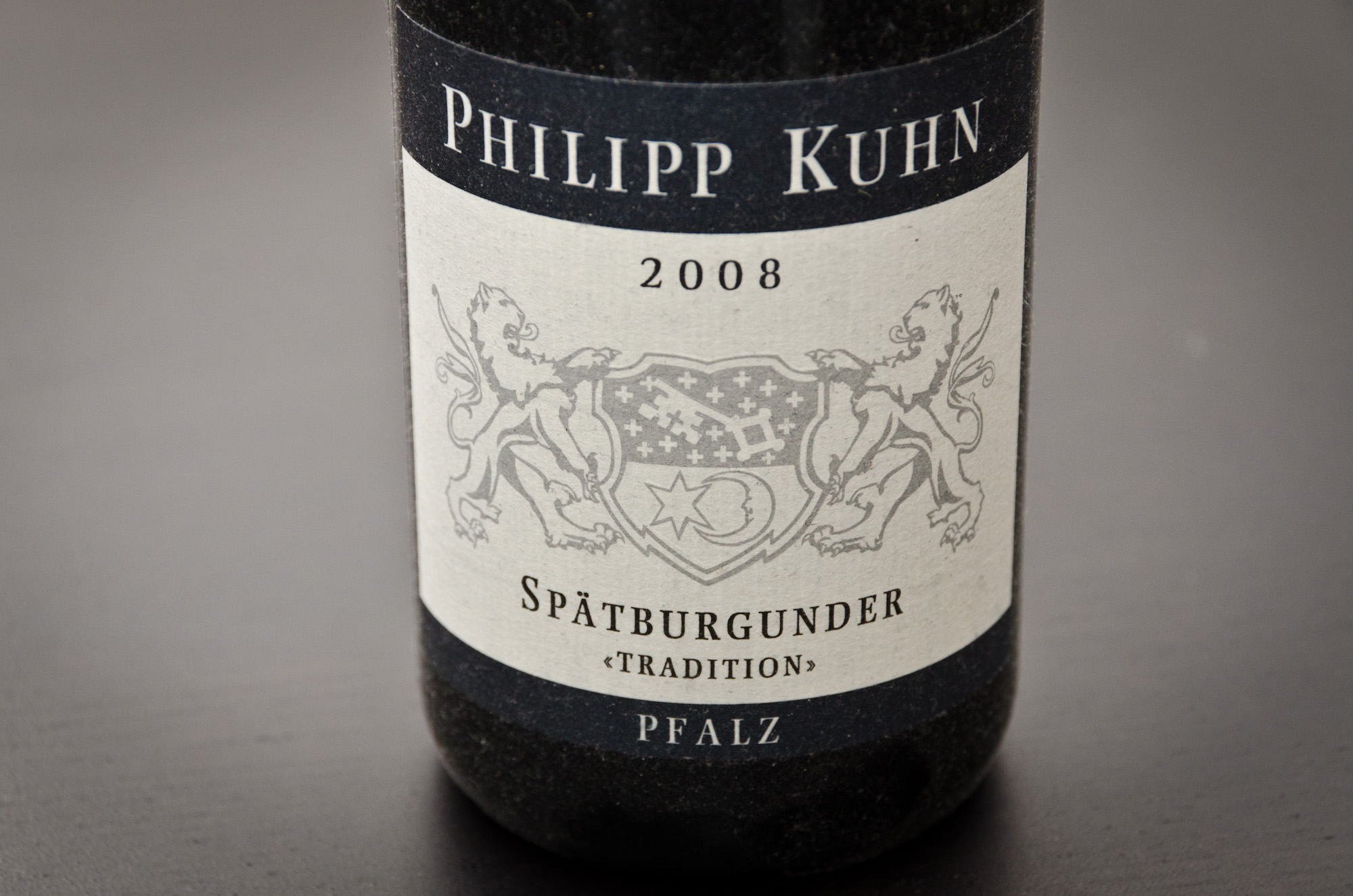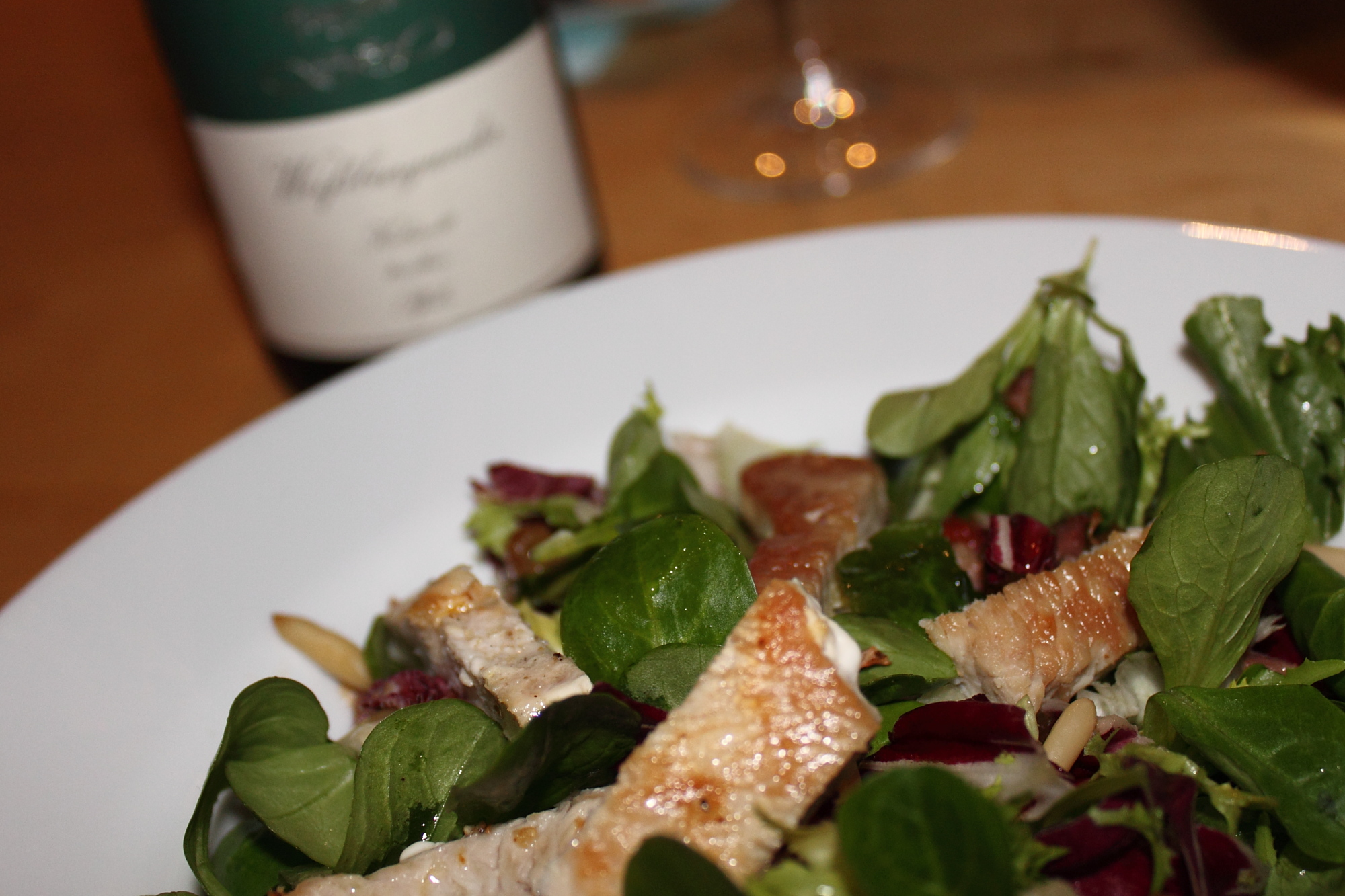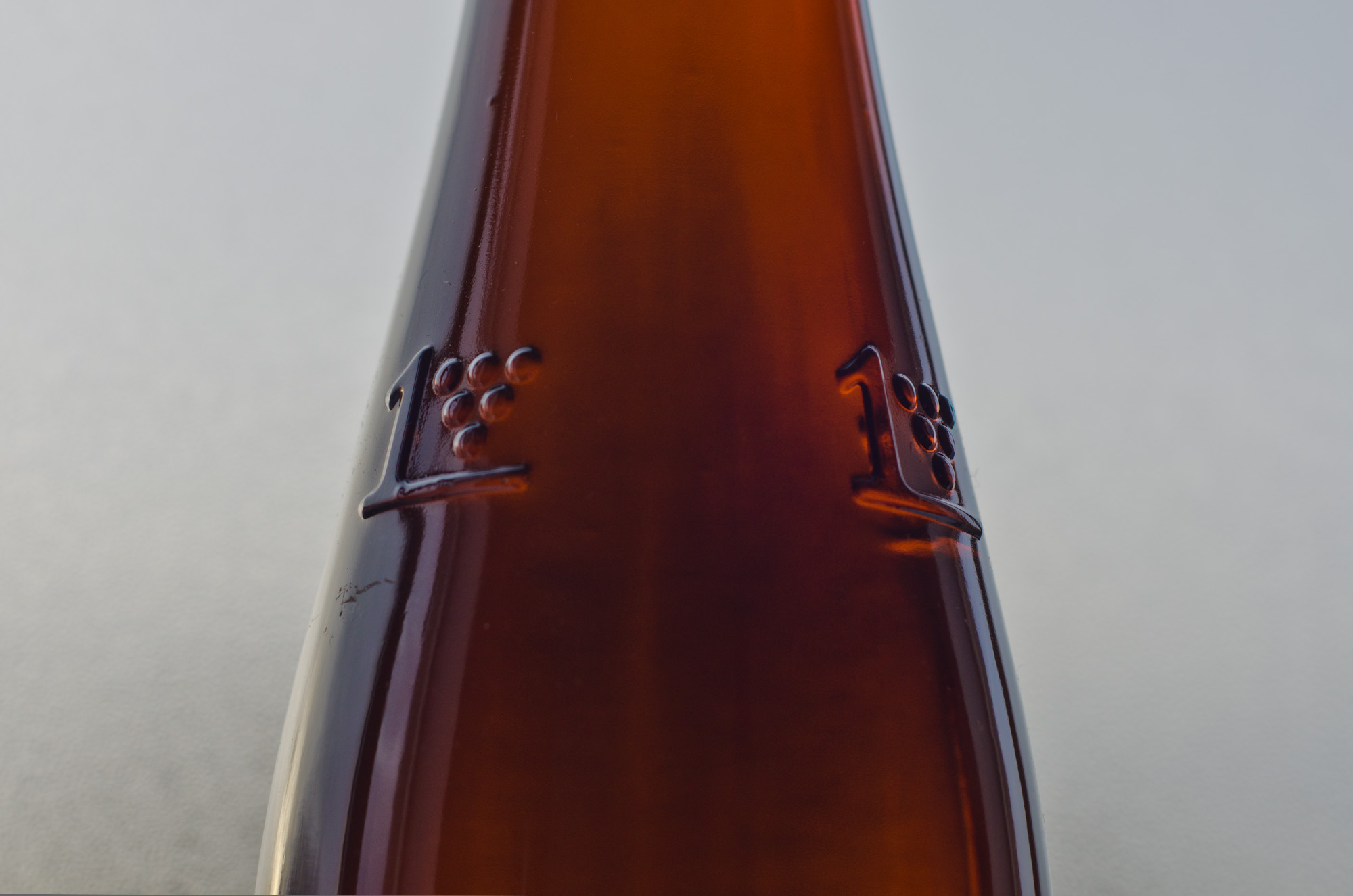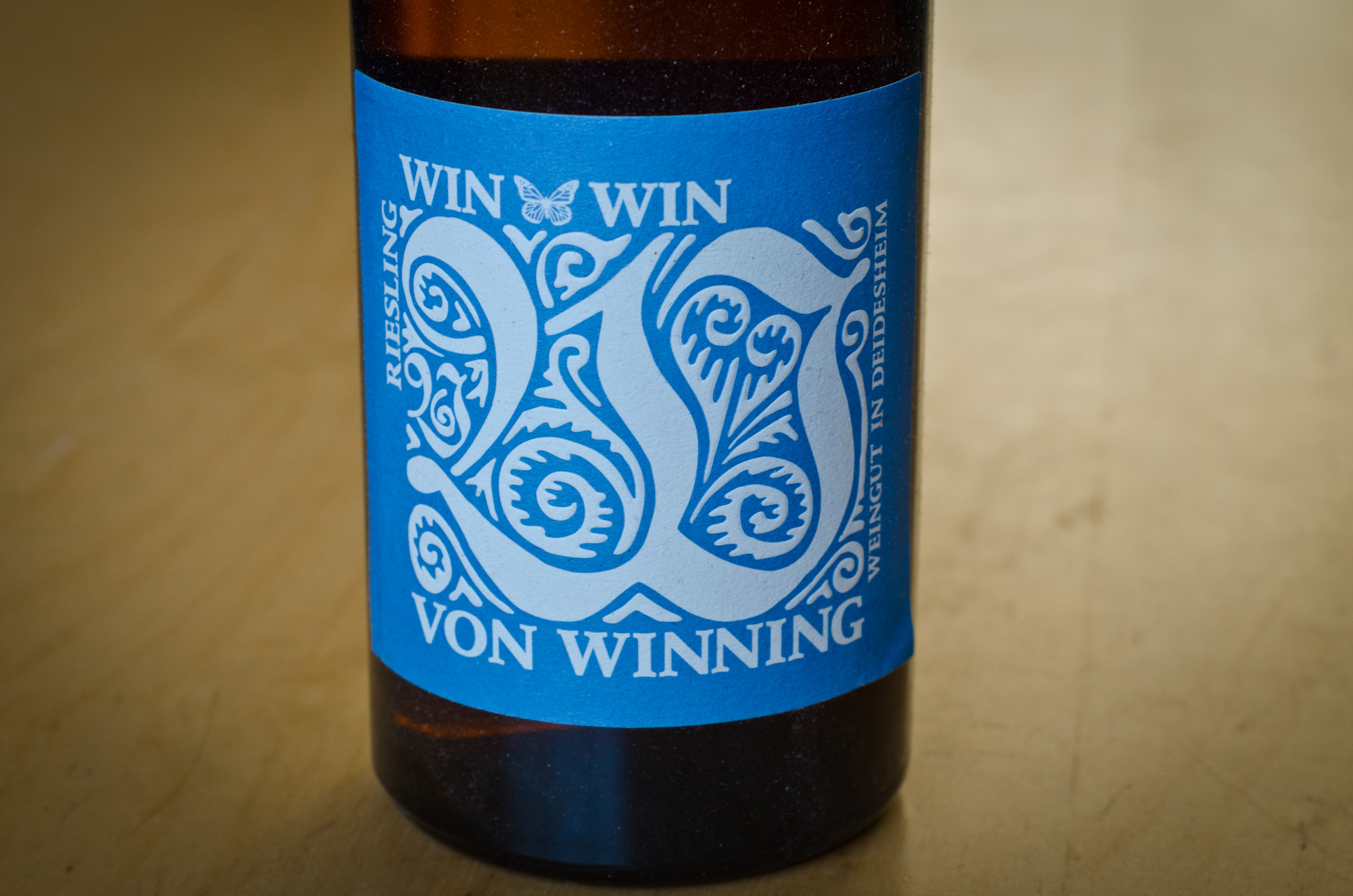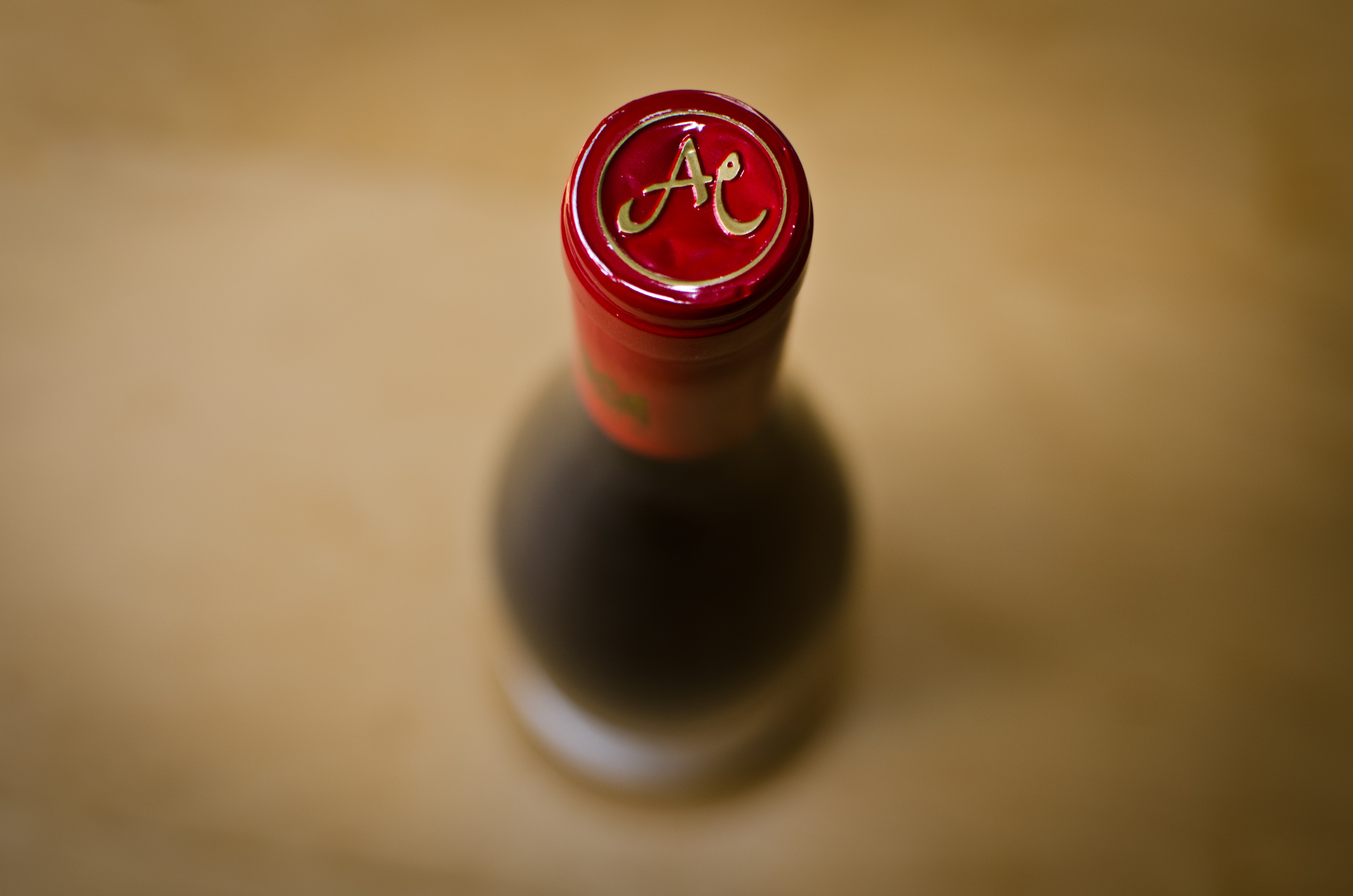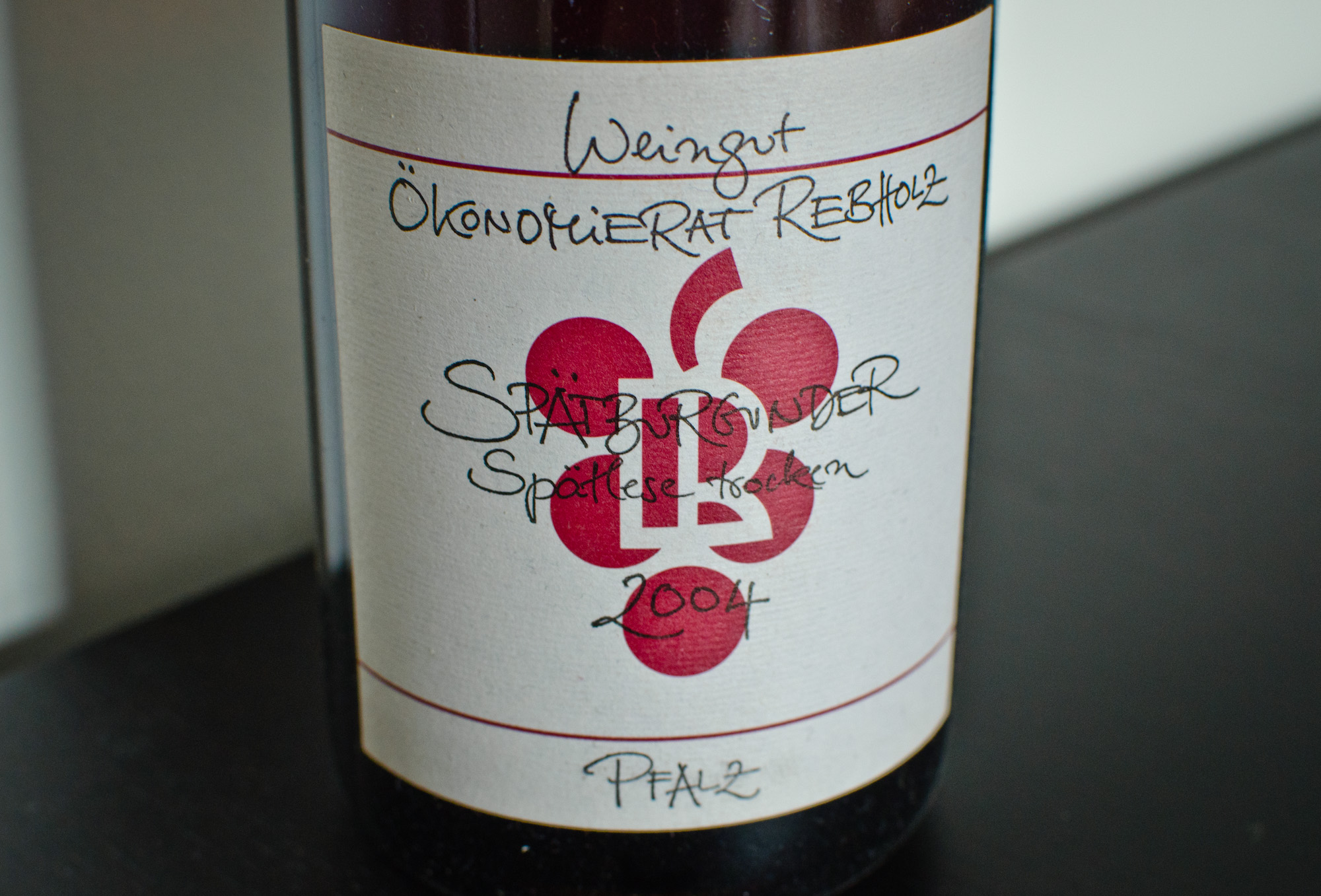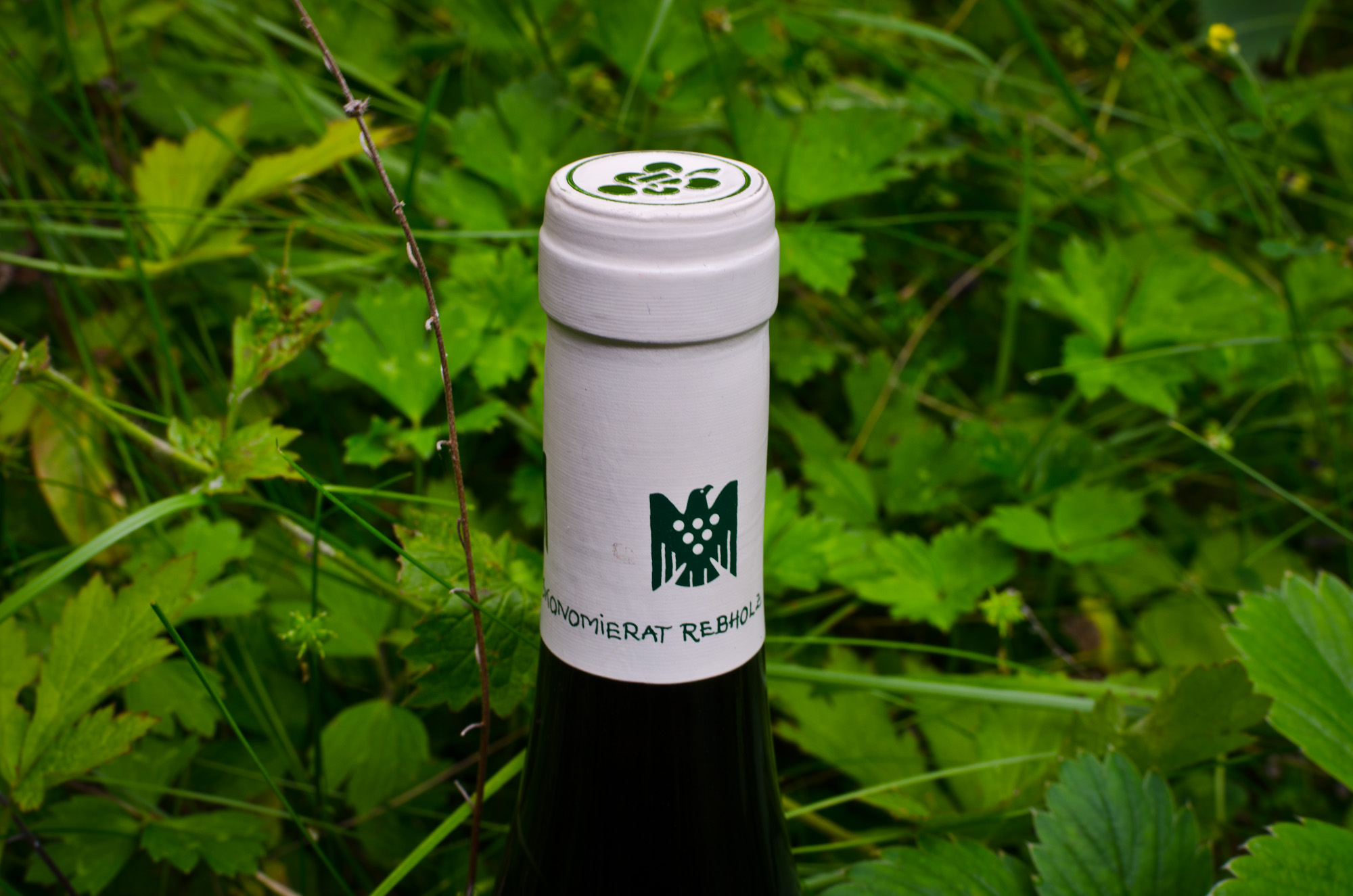Andreas Durst, Riesling "Grosser Durst", 2010
It is one of our favourite projects for the Wine Rambler that someday we should explain to you the German wine classification and labelling system in a coherent and mildly entertaining fashion. Today, however, we meet another clear-thinking winemaker who has willingly downgraded his own wine to the simplest category available (in this case: "Pfälzer Landwein") to be spared the bureaucratic nightmare otherwise required - in my humble experience, that step is always a good sign. Andreas Durst is a part-time winemaker only, his real job is to professionally photograph other winemakers, wines and vineyards, which he does so well that in the hipper part of the German wine scene, wine-related photography is simply synonymous with his name.

About this and about his wines, we won't say too much just now, because we hope to read and see a little more of Andreas on this blog soon (fingers crossed for a real treat). For now, let's turn to the dry Riesling from his small portfolio that he was nice enough to send ahead to Munich Wine Rambler HQ:

